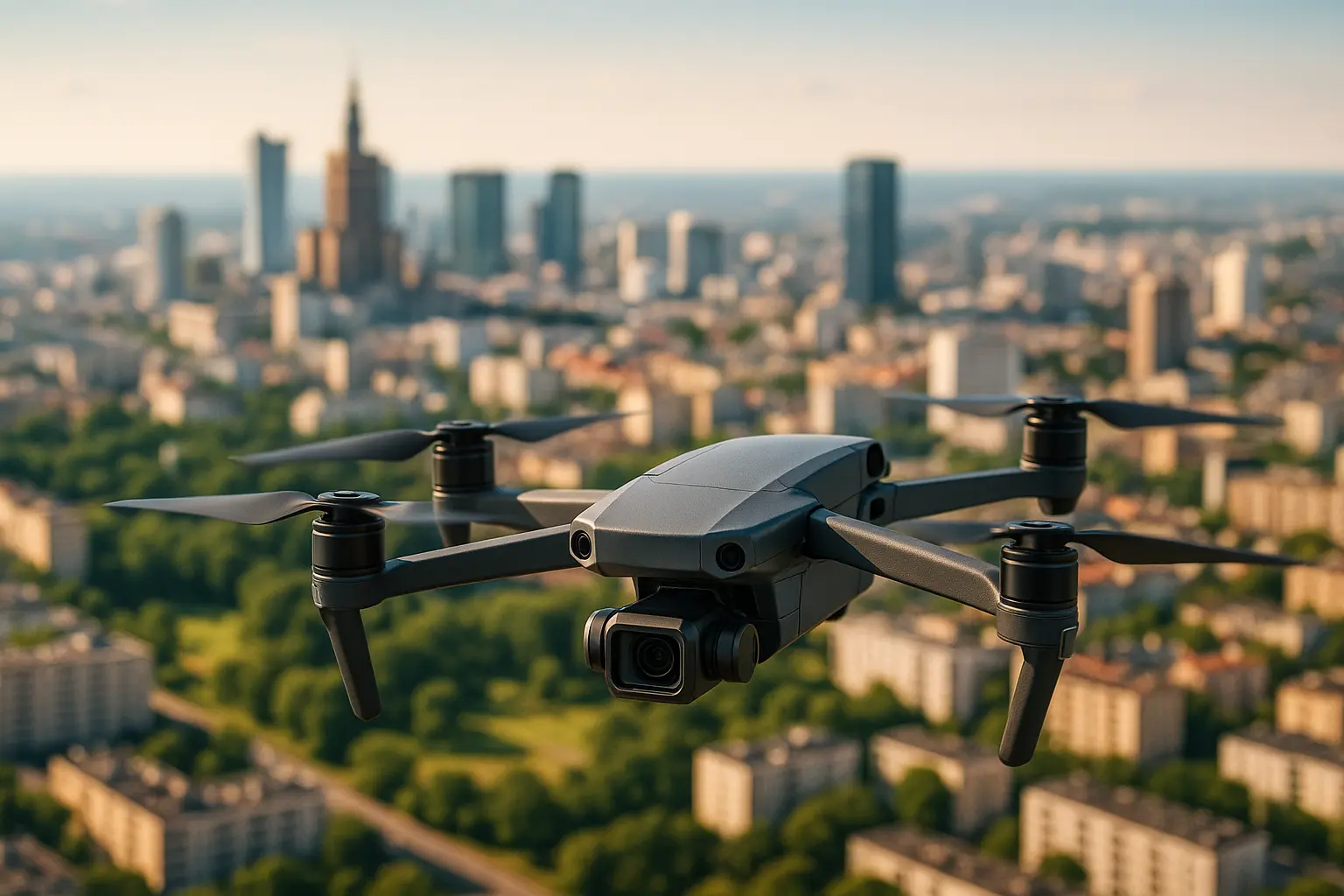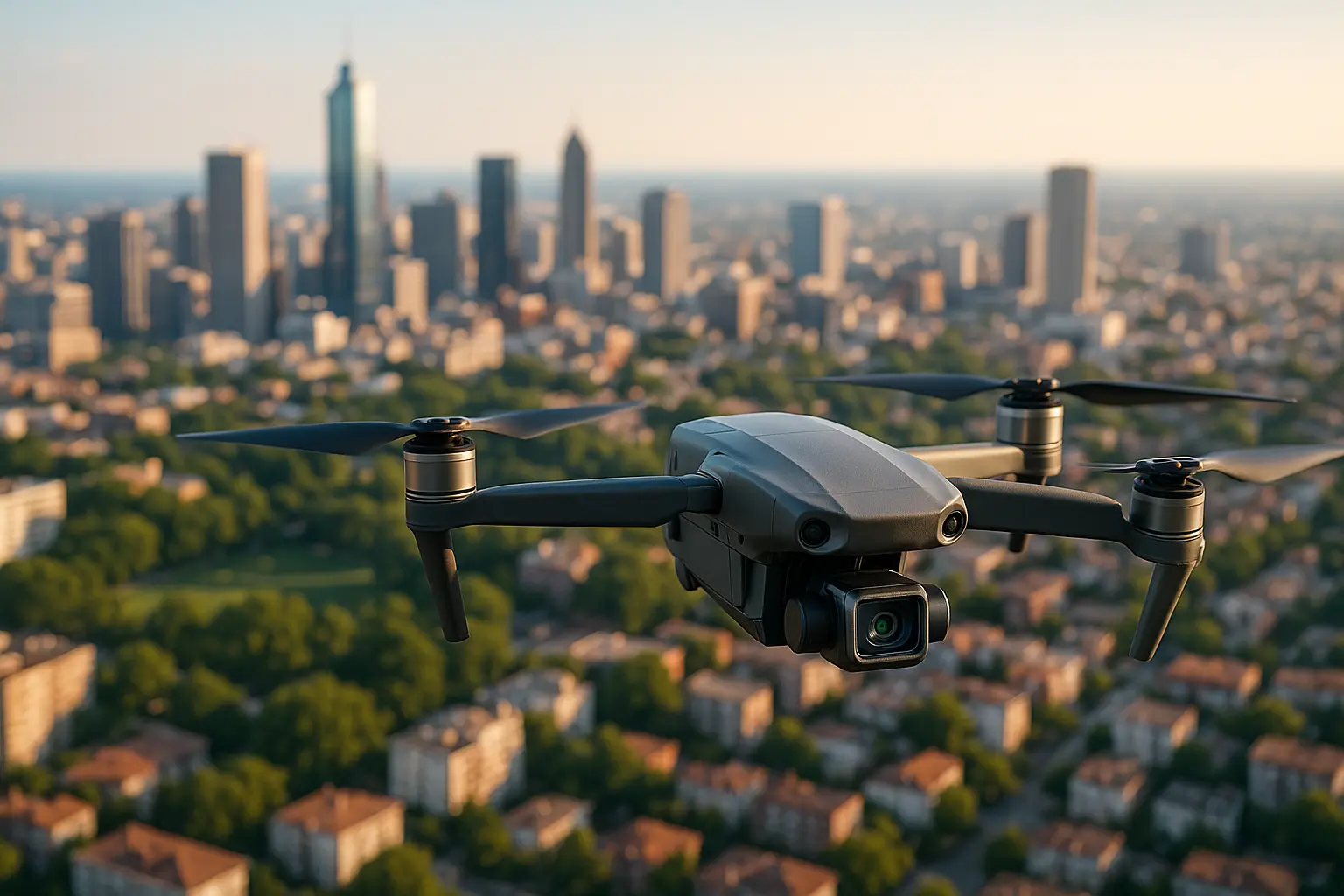The real estate landscape is taking flight—literally. In recent years, the application of drone technology in the property sector has revolutionized the way we view and assess real estate. Let’s embark on a journey to explore how these aerial marvels are reshaping the industry, one property at a time.
Aerial Views: Transforming Property Visualization
The ability to observe properties from above has traditionally been a privilege reserved for those in helicopters or planes. Now, thanks to the widespread adoption of drones, we’ve entered an era where stunning aerial photography is accessible to all. These flying devices, equipped with high-resolution cameras, provide a unique vantage point that elevates property marketing strategies.
Imagery captured by drones is vibrant and immersive, offering potential buyers a comprehensive view of a property’s layout and surrounding landscape. This technology unveils dimensions of the property that traditional on-ground methods might miss, such as the expanse of land, architectural harmony, and even the property’s environmental context.
Moreover, utilizing drones in real estate cuts down on time, providing quick and reliable solutions for agents and buyers alike. Instead of scheduling multiple site visits, buyers can make informed decisions with the help of detailed and accurate data captured from the skies.
Mapping and Measurement: Precision with LiDAR Technology
Beyond stunning imagery, drones are equipped with advanced LiDAR technology that enables precise 3D mapping and measurement. This is a game-changer for construction projects and real estate development, providing an unprecedented level of detail and accuracy.
LiDAR (Light Detection and Ranging) uses laser pulses to map out terrains and structures, which is crucial for understanding the topography of a site. With the ability to capture millions of data points in mere seconds, drones facilitate intricate mapping and analysis that’s instrumental for planning construction and development initiatives.
Through these maps, developers and architects gain insights into potential challenges and optimize their designs accordingly, minimizing costly revisions down the line. Furthermore, this data assists in assessing property boundaries, evaluating environmental impact, and even integrating software models to simulate future developments. In essence, drone-enhanced LiDAR offers a holistic approach to property mapping that is both efficient and precise.

Marketing Mastery: Engaging the Modern Buyer
In an era where visuals dominate, drones have become a marketing powerhouse in real estate. The ability to create cinematic video tours and captivating images gives properties an edge in a competitive market. These engaging visuals are not just eye-catching but also serve as a tool for storytelling, allowing potential buyers to envision life within a property.
Drones help create a narrative, showcasing not only the features of the home but also its proximity to nearby amenities and attractions. By employing these visuals in digital marketing campaigns, agents can captivate a broader audience, capturing the interest of buyers who might otherwise overlook traditional listings.
Moreover, the application of drones in marketing extends beyond residential properties. Commercial sectors, too, benefit from showcasing expansive layouts, infrastructure, and logistical advantages through drone footage. It’s not merely about selling a building; it’s about marketing a lifestyle, community, and future prospects.
Drone technology truly empowers us to create memorable impressions, turning prospect’s interest into firm commitments.
Integrating Drone Data: From Flight to Insight
While drones excel in capturing breathtaking images and detailed maps, the real magic happens in the integration of this data. The journey from flight to insight involves processing the rich information gathered and applying it to practical scenarios.
With the help of sophisticated software, we can convert drone data into actionable insights. For instance, AI-driven analytics can identify patterns, trends, and anomalies in property data, aiding agents and developers in making informed decisions. Whether it’s predicting property value trends or optimizing development plans, the potential applications are vast.
When integrated with existing models, drone data enriches the understanding of a property’s current state and future potential. This synthesis of information allows us to cater to diverse needs, offering customized solutions that align with individual client goals. Indeed, the true power of drones lies in their ability to transform raw data into meaningful, actionable insights that propel the real estate industry into the future.
As we navigate this exciting intersection of aviation and real estate, it’s clear that drones are not just a fleeting trend but a cornerstone of modern property mapping and assessment. With their ability to capture, map, and market with precision and flair, drones are indispensable tools that are reshaping the real estate landscape.
In embracing this technology, we’re not merely keeping pace with the times, but actively setting the trajectory for a future where properties are evaluated, marketed, and sold with unprecedented efficiency and creativity. The sky is truly the limit—and we’re just getting started. Let’s soar into this promising horizon together, equipped with the tools and insights to redefine the world of real estate.
FAQ
What are the benefits of using drones in real estate mapping?
Drones offer a unique aerial perspective that provides comprehensive views of properties and their surroundings. This can help in highlighting key features such as landscaping, proximity to amenities, and overall layout, making it easier for potential buyers to visualize the property.
How do drones enhance the accuracy of property mapping?
Drones are equipped with advanced GPS and imaging technologies that allow them to capture high-resolution images and videos. This precision in capturing data ensures detailed and accurate mapping, which is crucial for both real estate professionals and prospective buyers.
Are there any legal considerations when using drones for real estate purposes?
Yes, there are specific regulations governing the use of drones, including obtaining the necessary licenses and ensuring compliance with privacy laws. It’s important for real estate professionals to be aware of these regulations to avoid legal issues.
What type of properties benefit most from drone mapping?
Large estates, commercial properties, and locations with unique geographical features greatly benefit from drone mapping. The aerial view provided by drones can effectively showcase expansive areas, unique layouts, and the natural beauty surrounding the property.
Can drones be used for indoor property inspections?
While drones are primarily used for outdoor mapping, smaller drones can be utilized for indoor inspections. These drones can navigate through larger indoor spaces to provide video tours and capture details that might be missed in traditional photography.



